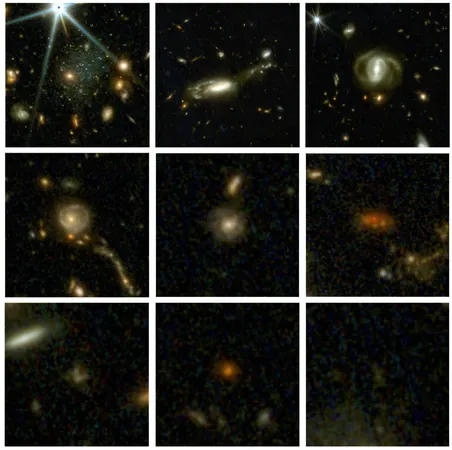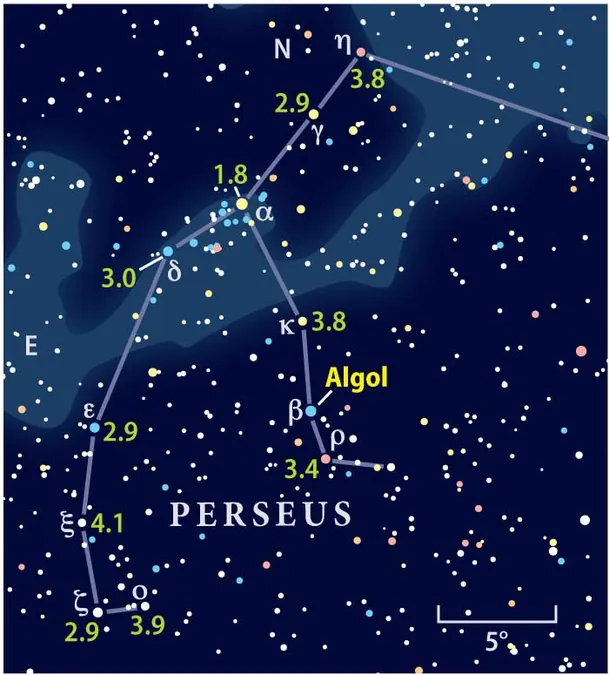
Astronomers Unveil Extraordinary Map of the Universe, Featuring 800,000 Galaxies and Upending Cosmic Theories!
2025-06-05
Author: Jia
An Unprecedented Cosmic Revelation
In a groundbreaking move towards open science, the multinational scientific collaboration known as COSMOS has unveiled what is now recognized as the largest map of the universe. Released on Thursday, this remarkable project harnesses data from the James Webb Space Telescope (JWST) and catalogs nearly 800,000 galaxies, spanning almost the entirety of cosmic time. This stellar revelation is already challenging long-held theories about the early universe.
A Giant Leap Beyond Hubble
"We aimed to create a deep field of space that surpasses every previous undertaking," declared Caitlin Casey, a UC Santa Barbara physics professor and co-leader of the COSMOS-Web project. She compared the scale of their findings to the legendary Hubble Ultra Deep Field, which captured around 10,000 galaxies in a relatively small area. Imagine an image that’s not just slightly larger, but a striking mural measuring 13 feet on each side!
Witnessing Cosmic History in the Making
This ambitious composite image reaches back approximately 13.5 billion years, a mere blink in the universe's estimated age of 13.8 billion years. The study aims not only to spot captivating galaxies from the dawn of time but to explore the broader cosmic environments that existed during the formation of the first stars, galaxies, and black holes.
Surprises Await in the Cosmic Neighborhood
Before the JWST began its mission, astronomers posed predictions regarding the number of galaxies it would unveil, expecting significantly fewer than what was found. They believed galaxies from the first 500 million years following the Big Bang would be extremely scarce. Yet, the launch of JWST revealed a stunning discovery: roughly ten times more galaxies at remarkable distances than anticipated, along with supermassive black holes invisible to Hubble.
New Questions Arising from Old Theories
While the COSMOS-Web dataset sheds light on numerous questions about the early universe, it opens the door to many more. "Are these findings disrupting our cosmological model?" Casey questioned. "The universe seemed to produce too much light too early, raising uncertainties about how such massive structures formed in a mere 400 million years." The quest for answers intensifies!
Democratizing Science for All
In an effort to broaden access to this groundbreaking research, COSMOS has made the data publicly available, inviting astronomers worldwide to engage with it. This initiative aims not only to refine our understanding of cosmic evolution but also to unlock secrets surrounding dark matter and other cosmic enigmas. Casey emphasized, "Great science emerges when diverse minds approach the same data set creatively. It's essential for everyone to contribute to solving these mysteries."
Continuing the Cosmic Exploration
As the COSMOS collaboration forges ahead, further data collection is on the horizon. The team is determined to confirm their identifications of the earliest galaxies by employing spectroscopy—a technique that dissects light from these galaxies to verify their distances. Casey noted that this process will also deliver insights into the interstellar chemistry through the tracing of elements like nitrogen, carbon, and oxygen. "We're just beginning to scratch the surface of this awe-inspiring universe!"

 Brasil (PT)
Brasil (PT)
 Canada (EN)
Canada (EN)
 Chile (ES)
Chile (ES)
 Česko (CS)
Česko (CS)
 대한민국 (KO)
대한민국 (KO)
 España (ES)
España (ES)
 France (FR)
France (FR)
 Hong Kong (EN)
Hong Kong (EN)
 Italia (IT)
Italia (IT)
 日本 (JA)
日本 (JA)
 Magyarország (HU)
Magyarország (HU)
 Norge (NO)
Norge (NO)
 Polska (PL)
Polska (PL)
 Schweiz (DE)
Schweiz (DE)
 Singapore (EN)
Singapore (EN)
 Sverige (SV)
Sverige (SV)
 Suomi (FI)
Suomi (FI)
 Türkiye (TR)
Türkiye (TR)
 الإمارات العربية المتحدة (AR)
الإمارات العربية المتحدة (AR)